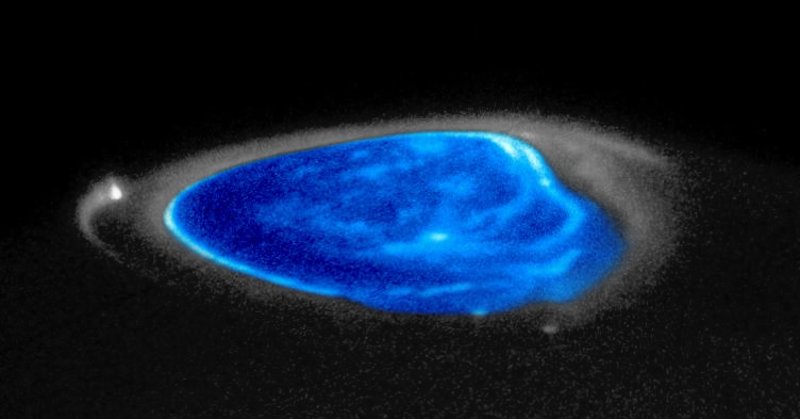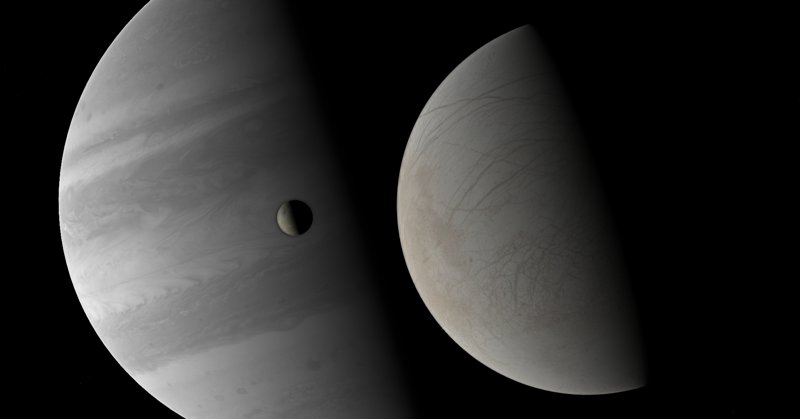Discover 25 fascinating facts about Jupiter—from ancient observations to modern space missions and its mysterious moons and storms.
Jupiter, the largest planet in our solar system, has fascinated astronomers and skywatchers for centuries. Known for its massive size, swirling storms, and dozens of moons, Jupiter plays a critical role in shaping the dynamics of the entire solar system. From ancient Babylonian observations to modern-day space missions, our understanding of Jupiter continues to evolve—often revealing astonishing surprises along the way. Here are 25 fascinating facts that uncover the secrets, science, and strange wonders of the gas giant:
Speed of Light’s Early Estimate

1. In 1676, Danish astronomer Ole Rømer first estimated the speed of light by observing the eclipses of Io, one of Jupiter’s moons. He noticed that the time intervals between these eclipses increased as Earth moved further away from Jupiter. Rømer concluded that this change occurred because light required more time to travel over the greater distance.
2. Astronomers discovered Jupiter’s outermost known moon, S/2003 J 2, in 2003-but it vanished shortly after and was considered lost. It wasn’t seen again for nearly 17 years and was finally rediscovered in 2020, confirming its elusive orbit around the gas giant.
3. Jupiter’s Great Red Spot, a massive storm, generates such intense acoustic waves that they heat the surrounding atmosphere to nearly 2,400 degrees Fahrenheit. Despite its incredible longevity of approximately 400 years, scientists predict it may disappear within the next 10 to 20 years.
4. When NASA discovered Jupiter’s intense radiation belts, they needed a quick solution to protect the Voyager deep space probes’ exterior cables. Ingeniously, they sent a technician to a local supermarket to purchase all available kitchen-grade aluminum foil. By wrapping the cables in this foil, they effectively shielded them from radiation, allowing the mission to proceed successfully.
5. Jupiter acts as the “vacuum cleaner of the solar system” by using its gravitational pull to draw in asteroids and comets. This gravitational influence causes these celestial bodies to collide with Jupiter, reducing the risk of impacts on Earth and other inner planets. In fact, the rate of impacts on Jupiter is about 2,000 to 8,000 times higher than on Earth.
6. Despite lacking water, Jupiter’s moon Io experiences waves due to gravitational forces from Jupiter and its other moons. These forces cause Io’s rocky surface to rise and fall, creating waves up to 100 meters (328 feet) high. These waves cause Io to be the most volcanically active world in the solar system, with eruptions visible from Earth through large telescopes.
7. Every time Io enters Jupiter’s shadow, its atmosphere freezes solid and crashes onto the surface. When Io re-enters sunlight, the frozen atmosphere thaws and returns to a gaseous state.
8. A planet can have a maximum mass of approximately 10 to 13 times that of Jupiter before its gravity triggers nuclear fusion. Beyond this point, the celestial body becomes a brown dwarf, often referred to as a “failed star.” This transformation marks the boundary between planets and stars.
9. Ancient Babylonians used a primitive form of calculus to calculate Jupiter’s daily displacement along the ecliptic, the path the Sun appears to trace through the stars. Historians previously believed such mathematical techniques emerged over 1,400 years later, in 14th-century Europe.
10. Jupiter’s immense size causes it and the Sun to orbit a common center of mass located outside the Sun itself. This unique orbital relationship results from Jupiter’s significant gravitational influence. Consequently, Jupiter’s presence affects the dynamics of the entire solar system.
Jupiter’s Intense Upper Atmosphere

11. Jupiter’s upper atmosphere is significantly hotter than scientists initially predicted, reaching approximately 425°C (800°F). Interestingly, the poles are much hotter than the equator. This phenomenon occurs because Jupiter’s magnetic field generates enormous auroras at the poles, which in turn heat the surrounding atmosphere across the planet.
12. In 2011, a 14-year-old amateur astronomer from Canada demonstrated that Jupiter is bright enough to cast shadows on Earth. This discovery highlights Jupiter’s immense luminosity, which can be observed even from our planet.
13. The Galileo probe experienced an intense deceleration of 230g when it entered Jupiter’s atmosphere, equivalent to a sudden velocity change from 5,000 mph to 0 in just one second. In 1995, this probe collected and transmitted valuable data for 58 minutes as it plunged into Jupiter before being destroyed by the planet’s increasing atmospheric pressure. The mission provided unprecedented insights into Jupiter’s atmospheric composition and dynamics.
14. The Juno spacecraft, currently orbiting Jupiter, carries three unique LEGO minifigures made of aluminum. The first minifigure represents Galileo Galilei, who was the first to study Jupiter extensively. The second figure depicts the Roman god Jupiter, while the third represents the Roman goddess Juno. These minifigures symbolize the historical and mythological connections to Jupiter.
15. Jupiter is gradually shrinking by approximately 2 centimeters each year. This shrinkage occurs because the planet radiates more heat than it receives from the Sun.
16. Ganymede, one of Jupiter’s moons, is larger than the planet Mercury. If Ganymede orbited the Sun instead of Jupiter, it would be classified as a planet.
17. Galileo Galilei sent two coded messages to Johannes Kepler, revealing that Saturn has rings and Venus has phases, indicating it orbits the Sun, not Earth. However, Kepler misinterpreted these messages as stating that Mars has two moons and Jupiter has a large red spot. Interestingly, both of Kepler’s incorrect interpretations were later proven true by subsequent astronomical discoveries.
18. NASA’s Juno spacecraft traveled 1.8 billion miles over nearly five years to reach Jupiter, arriving on July 4, 2016, at 8:53 PM US Pacific time, just one second off schedule.
19. Jupiter experiences radio storms so powerful that they can be detected and heard by an AM radio on Earth.
20. All of Jupiter’s moons are named after the extramarital lovers and children of the mythical Roman god Jupiter. NASA named the Juno probe after his wife, Juno, symbolizing her journey to “check up on her husband’s mischief.”
Jupiter’s Expanding Moon Count

21. As of June 2025, astronomers have identified 97 moons orbiting Jupiter. This number is expected to increase as advancements in technology allow for better detection of smaller celestial bodies.
22. Europa, one of Jupiter’s moons, is enveloped in a thick shell of ice, beneath which lies a vast subsurface ocean. Scientists estimate this ocean has an average depth of 100 kilometers and a radius of 877 kilometers. Remarkably, this ocean contains three times the combined volume of water found in all of Earth’s oceans, making Europa a fascinating subject for the study of potential extraterrestrial life.
23. Jupiter’s immense gravitational pull prevents the asteroid belt from forming into a planet. The planet’s gravity continuously disrupts the asteroids, causing them to collide with one another. As a result, the asteroid belt remains a scattered collection of rocky bodies rather than a cohesive planetary mass.
24. Core samples have revealed that Jupiter and Venus exert a gravitational pull that shifts Earth’s orbit every 405,000 years. This phenomenon has been occurring for at least 415 million years. These orbital shifts can influence Earth’s climate and geological activity over long timescales.
25. Comet Shoemaker-Levy 9 was the first comet observed to orbit a planet, specifically Jupiter. In 1994, its fragments collided with Jupiter, releasing energy equivalent to 600 times the world’s nuclear arsenal.








Add Comment